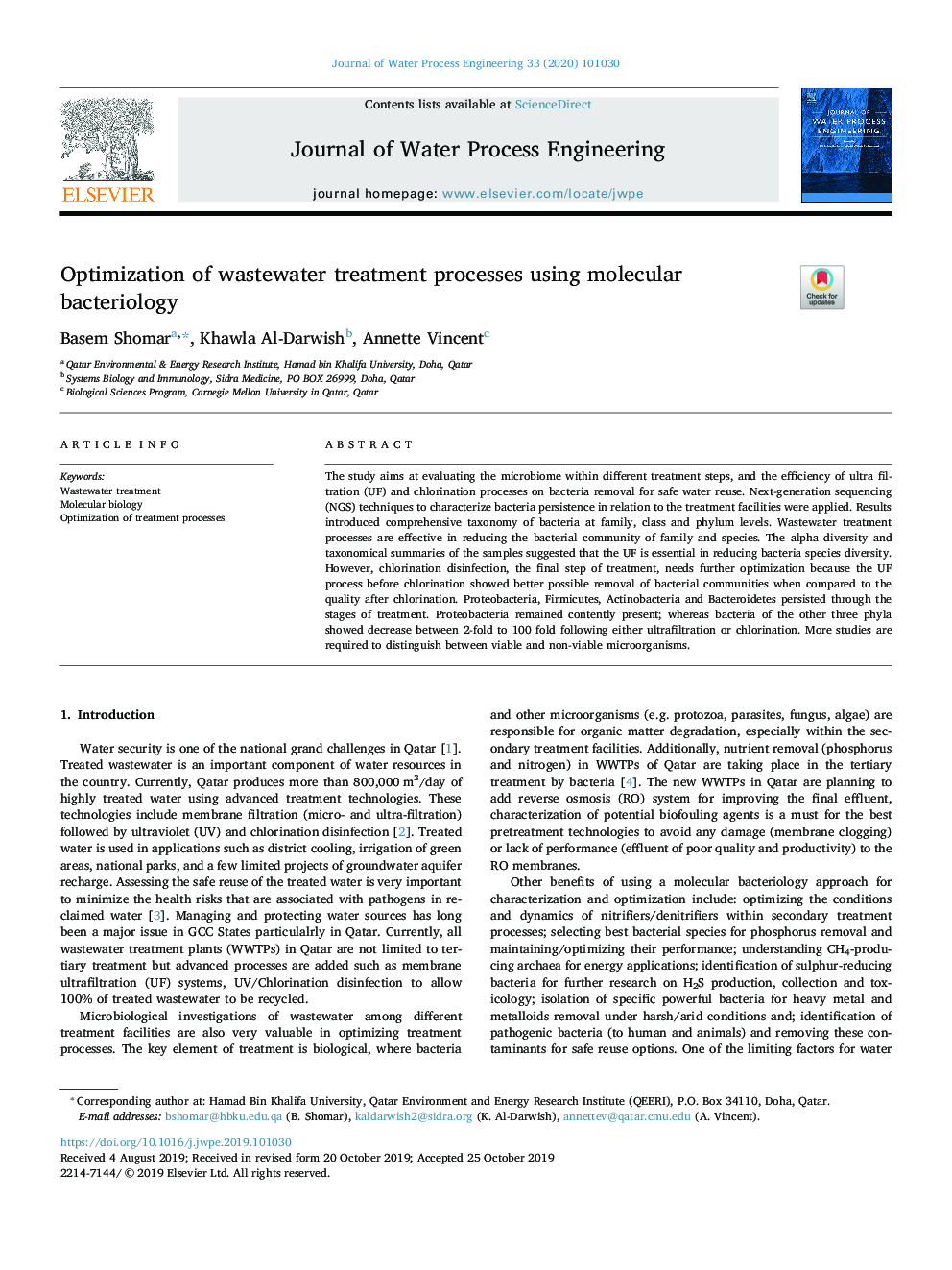| Article ID | Journal | Published Year | Pages | File Type |
|---|---|---|---|---|
| 13417587 | Journal of Water Process Engineering | 2020 | 8 Pages |
Abstract
The study aims at evaluating the microbiome within different treatment steps, and the efficiency of ultra filtration (UF) and chlorination processes on bacteria removal for safe water reuse. Next-generation sequencing (NGS) techniques to characterize bacteria persistence in relation to the treatment facilities were applied. Results introduced comprehensive taxonomy of bacteria at family, class and phylum levels. Wastewater treatment processes are effective in reducing the bacterial community of family and species. The alpha diversity and taxonomical summaries of the samples suggested that the UF is essential in reducing bacteria species diversity. However, chlorination disinfection, the final step of treatment, needs further optimization because the UF process before chlorination showed better possible removal of bacterial communities when compared to the quality after chlorination. Proteobacteria, Firmicutes, Actinobacteria and Bacteroidetes persisted through the stages of treatment. Proteobacteria remained contently present; whereas bacteria of the other three phyla showed decrease between 2-fold to 100 fold following either ultrafiltration or chlorination. More studies are required to distinguish between viable and non-viable microorganisms.
Related Topics
Physical Sciences and Engineering
Chemical Engineering
Chemical Engineering (General)
Authors
Basem Shomar, Khawla Al-Darwish, Annette Vincent,
